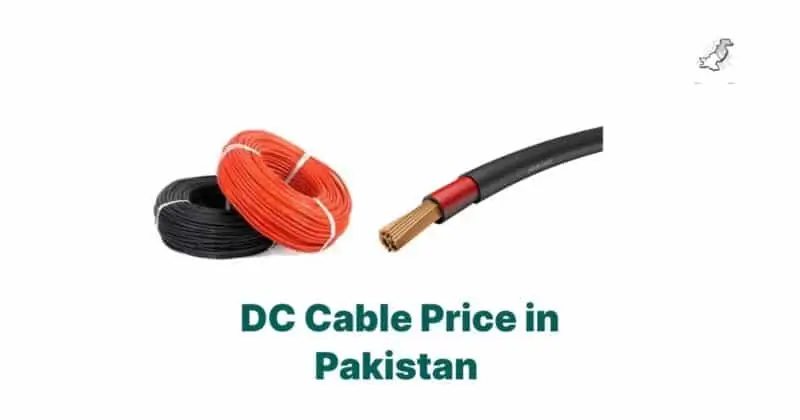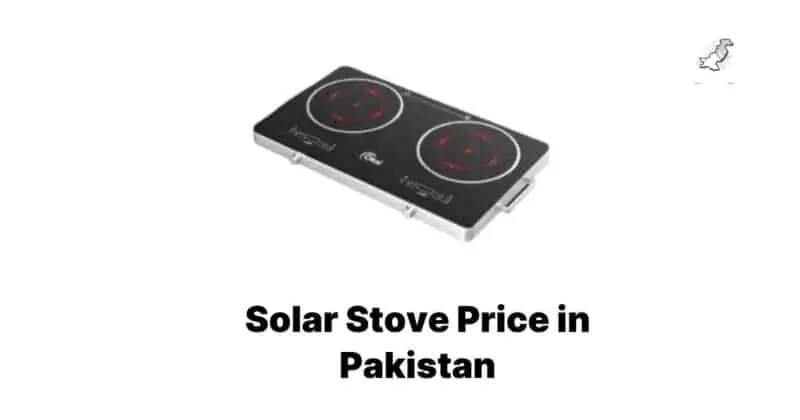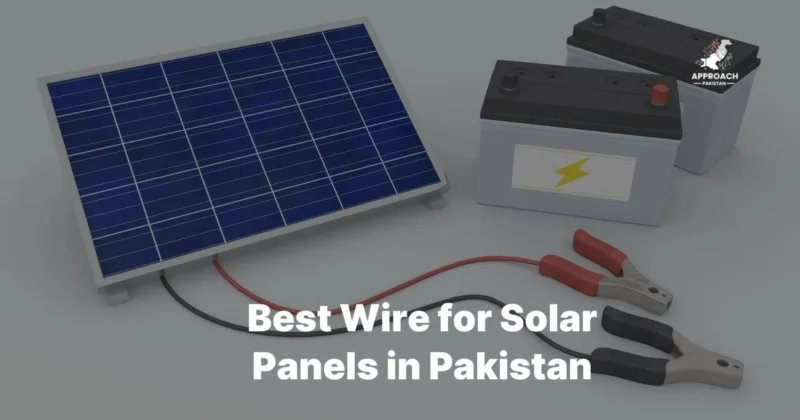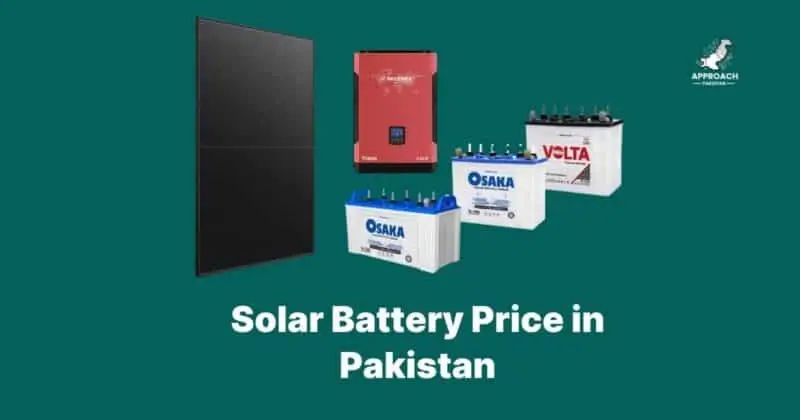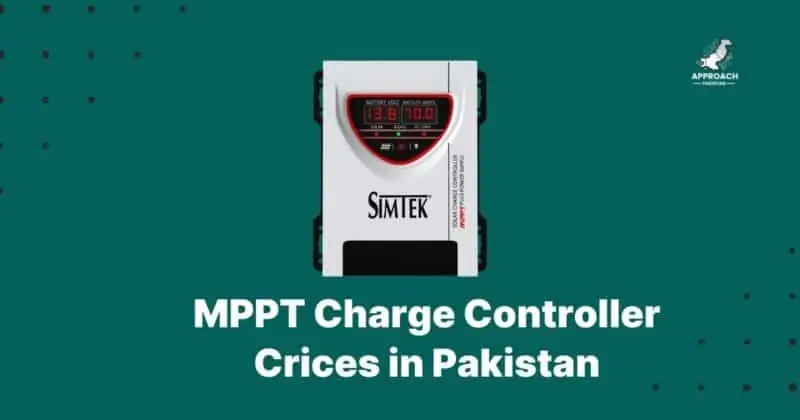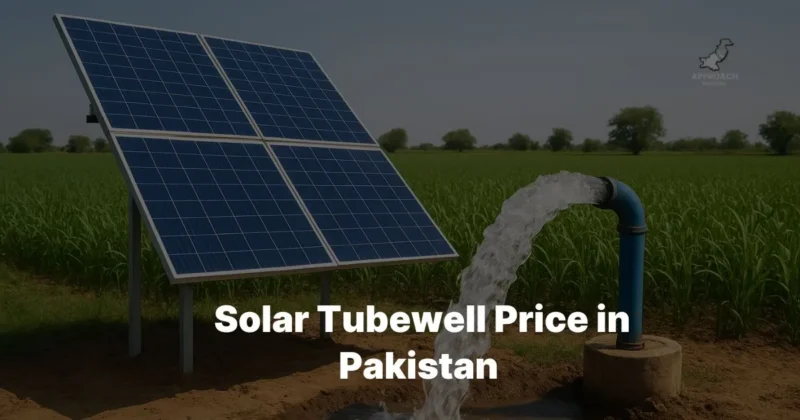Solar Battery Price Guide Pakistan | All Brands 2025
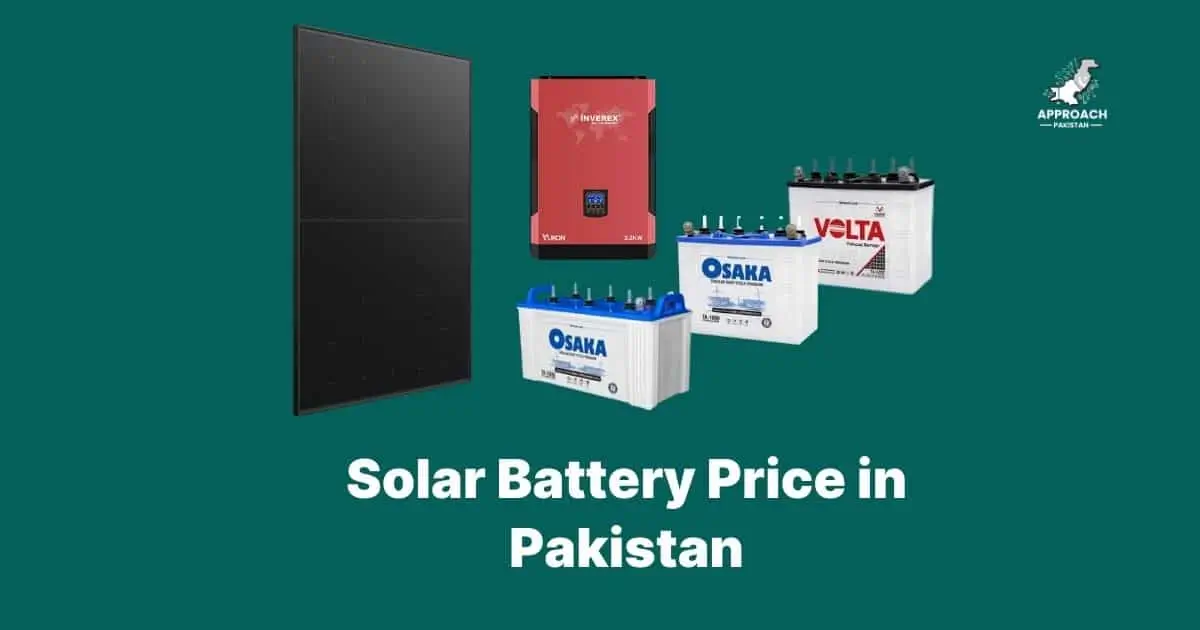
Solar battery prices in Pakistan range from PKR 15,000 for basic 100Ah lead-acid batteries to PKR 700,000+ for premium lithium systems. Entry-level options cost PKR 15,000-30,000, mid-range batteries PKR 30,000-60,000, while premium lead-acid reach PKR 200,000. Lithium batteries start from PKR 200,000 and can exceed PKR 700,000 for high-capacity systems.
Introduction Solar Batteries
Sick of watching 50% of your monthly income vanish into electricity bills? You’re not alone in this struggle.
Pakistani families now spend PKR 20,000-35,000 monthly on electricity. Load shedding hits 10-14 hours daily across major cities. Your frustration with unreliable power and skyrocketing tariffs makes complete sense.
But here’s the game-changer: solar batteries can slash your electricity dependency by 70-80%. These energy storage powerhouses store solar power during the day, keeping your home running during outages and peak tariff hours.
Current Market Overview
Pakistan’s battery storage market hit $1.8 billion in 2024. Solar battery adoption jumped 65% as families seek energy independence from grid uncertainty.
Import duties on lithium batteries dropped to 11% in 2024. Local assembly by companies like Inverex keeps mid-range options affordable for average households
Why Solar Batteries Matter for Pakistan
Your solar panels generate power only during daylight hours. Without batteries, you lose 60-70% of potential savings from your solar investment.
Think of batteries as your personal power bank. They capture surplus energy when the sun shines bright, then feed your home when darkness falls or the grid fails.
Types of Solar Batteries Available in Pakistan
Lead-Acid vs Lithium Comparison
Lead-acid batteries dominate Pakistan’s market due to affordability and local availability. They cost 60-70% less than lithium but require regular maintenance and have shorter lifespans. Lithium batteries offer 3x longer life and higher efficiency but demand significant upfront investment.
| Feature | Lead-Acid | Lithium |
| Initial Cost | PKR 15,000-200,000 | PKR 200,000-700,000+ |
| Lifespan | 3-5 years | 10-15 years |
| Maintenance | Monthly water topping | Maintenance-free |
| Depth of Discharge | 50% | 80-90% |
| Efficiency | 70-80% | 90-95% |
| Weight | Heavy (50-80kg) | Light (25-40kg) |
Tubular Battery Technology
Tubular batteries use advanced plate design that handles deep discharge cycles better. Their thick positive plates resist corrosion in Pakistan’s harsh climate conditions.
These batteries last 20-30% longer than flat-plate designs. They’re perfect for solar applications where daily deep cycling occurs regularly.
Deep Cycle Battery Benefits
Deep cycle batteries tolerate repeated discharge-recharge cycles without damage. Unlike car batteries, they’re built for marathon performance, not sprint power delivery.
Solar systems need batteries that work daily for years. Deep cycle construction ensures reliable performance throughout Pakistani summers and monsoons.
Gel Battery Advantages
Gel batteries seal electrolyte in silica gel, eliminating water loss and spillage risks. They perform better in extreme temperatures common across Pakistan’s diverse climate zones.
These batteries need zero maintenance and work safely in any position. Perfect for rooftop installations where accessing batteries becomes challenging.
2025 Solar Battery Price Guide Pakistan
Entry-Level Batteries (PKR 15,000-30,000)
| Brand | Model | Capacity | Price (PKR) | Best For |
| Atlas | 100Ah Deep Cycle | 100Ah | 15,873 | Small homes, basic UPS |
| Osaka | HT 130 | 100Ah | 20,000 | Medium load backup |
| AGS | SP-100R | 60Ah | 20,600 | Fan, lights backup |
| Phoenix | TX-600 | 60Ah | 16,500 | Essential appliances |
Entry-level batteries suit small homes with basic needs. They power fans, lights, and mobile charging during short outages.
These batteries work best for families spending under PKR 15,000 monthly on electricity. They provide immediate relief without massive upfront investment.
Mid-Range Options (PKR 30,000-60,000)
| Brand | Model | Capacity | Price (PKR) | Warranty | Applications |
| Osaka | TA-1500 | 140Ah | 48,000 | 1 year | Medium homes |
| AGS | SP-180 | 120Ah | 39,600 | 1 year | Daily solar cycling |
| Phoenix | TX-1200 | 160Ah | 52,000 | 1 year | Tubular technology |
| Exide | TR-1500 | 150Ah | 43,100 | 18 months | Reliable performance |
Mid-range batteries handle typical Pakistani homes with 2-3 bedrooms. They run essential appliances for 4-6 hours during load shedding periods.
These options suit families with monthly electricity bills between PKR 15,000-25,000. The extra capacity provides comfort during extended outages.
Premium Batteries (PKR 60,000-200,000+)
| Brand | Model | Capacity | Price (PKR) | Special Features |
| Osaka | TA-2500 | 230Ah | 75,330 | Heavy-duty construction |
| Phoenix | TX-3500 | 280Ah | 91,250 | Maximum capacity |
| AGS | SP-2500 | 210Ah | 75,000 | Commercial grade |
| Hawk | HT-3500 | 300Ah | 65,000 | 5-year lifespan |
Premium batteries power large homes or small businesses completely. They handle air conditioners, refrigerators, and full household loads for 6-10 hours.
Perfect for families with monthly bills exceeding PKR 25,000 who want complete energy independence. These investments pay back within 2-3 years through bill savings.
Lithium Battery Pricing (PKR 200,000-700,000+)
| Brand | Model | Voltage | Capacity | Price (PKR) | Cycle Life |
| Inverex | Power Wall | 24V | 100Ah | 180,000 | 6,000 cycles |
| Exide | Atlantic | 48V | 100Ah | 325,000 | 6,000 cycles |
| Knox | H-U51100 | 51V | 100Ah | 245,000 | 8,000 cycles |
| Ziewnic | Z-Box | 51.2V | 280Ah | 690,000 | 8,000 cycles |
Lithium batteries cost 3-4x more upfront but last 3x longer than lead-acid. They’re maintenance-free and provide consistent power output throughout their lifespan.
Top Solar Battery Brands in Pakistan
Osaka Battery Detailed Review and Pricing
Osaka dominates Pakistan’s battery market with 35% market share. Their tubular technology performs exceptionally in hot climates, lasting 20-30% longer than competitors. Prices range from PKR 20,000 for 100Ah to PKR 80,000 for 300Ah models.
Osaka’s TA series uses thick tubular plates that resist sulfation. Their batteries handle 1,200-1,500 cycles at 80% depth of discharge in Pakistani conditions.
Popular Models:
- TA-1200 (125Ah): PKR 52,500 – Perfect for medium homes
- TA-1800 (160Ah): PKR 54,000 – Best seller for solar systems
- TA-2500 (230Ah): PKR 75,330 – Premium choice for large homes
AGS Battery Performance Analysis
AGS (Atlas Group) offers reliable performance at competitive prices. Their batteries use calcium-silver alloy grids that reduce water loss by 40% compared to standard designs.
Strengths:
- Consistent quality control
- Wide dealer network
- Competitive pricing
- Good warranty support
Top Models:
- SP-140 (100Ah): PKR 33,600
- SP-180 (120Ah): PKR 39,600
- SP-250 (175Ah): PKR 55,200
Phoenix Battery Specifications and Costs
Phoenix specializes in tubular technology with robust construction. Their TX series handles deep cycling applications better than most competitors in the price range.
Key Features:
- Tubular positive plates
- Acid-resistant separators
- Heavy-duty terminals
- One-year warranty
Price Range:
- TX-1000 (110Ah): PKR 26,000
- TX-1400 (175Ah): PKR 58,250
- TX-2500 (230Ah): PKR 74,500
Exide Battery Durability Testing
Exide, established since 1953, brings decades of experience. Their TR series targets solar applications with enhanced cycling capability and temperature tolerance.
Performance Data:
- 1,000-1,200 cycles at 50% DOD
- Temperature range: -10°C to 55°C
- Water loss rate: <5ml/100Ah/month
Pricing:
- TR-1500 (150Ah): PKR 43,100
- TR-2000 (200Ah): PKR 54,900
- TR-2500 (230Ah): PKR 63,000
Narada Lithium Battery Premium Features
Narada brings Chinese lithium technology to Pakistan’s market. Their LiFePO4 chemistry provides superior safety and longevity compared to other lithium types.
Advanced Features:
- Built-in BMS protection
- Mobile app monitoring
- Parallel connection capability
- 10-year warranty
Investment Level:
- 48V 100Ah: PKR 480,000-550,000
- 48V 200Ah: PKR 900,000+
PylonTech Lithium Technology
PylonTech focuses on modular lithium systems. Their batteries connect in parallel for scalable capacity, perfect for growing energy needs.
Technical Specifications:
- Modular design
- CAN bus communication
- 95% round-trip efficiency
- 6,000+ cycle life
Pricing:
- 48V 100Ah: PKR 450,000
- Stackable modules available
Daewoo Battery Market Entry
Daewoo recently entered Pakistan’s solar battery market. Their deep cycle batteries compete directly with established brands on price and performance.
Market Position:
- Aggressive pricing strategy
- Korean technology
- Growing dealer network
- Competitive warranty terms
Current Pricing:
12V Deep Cycle: PKR 68,800iciency, advanced monitoring, and professional-grade reliability.
Battery Capacity and Sizing Guide
100Ah Battery Applications and Pricing
100Ah batteries suit small homes with basic electrical needs. They power 4-5 LED lights, 2-3 fans, mobile charging, and a small TV for 4-6 hours. Prices range from PKR 15,000-35,000 depending on brand and technology.
Load examples for 100Ah capacity:
- 5 LED lights (50W total): 10 hours runtime
- 3 ceiling fans (150W total): 6 hours runtime
- LED TV + decoder (80W): 8 hours runtime
- Mobile charging (20W): 24 hours runtime
150Ah Battery Home Usage Scenarios
150Ah batteries handle medium-sized homes comfortably. They run essential appliances during 6-8 hour outages without compromising comfort levels.
Typical Applications:
- Complete lighting for 3-bedroom home
- Fans in all rooms
- TV and entertainment system
- Refrigerator (partial runtime)
- WiFi router and computers
Price Range: PKR 25,000-45,000
185Ah Battery Medium Home Systems
185Ah capacity covers most Pakistani middle-class homes. These batteries provide substantial backup power for extended outages while maintaining normal lifestyle.
Power Coverage:
- Full home lighting
- All fans and ceiling fixtures
- Refrigerator continuous operation
- TV, computer, gaming systems
- Water pump (short cycles)
Investment: PKR 35,000-60,000
200Ah+ Battery Large Home Requirements
200Ah+ batteries suit large homes or small businesses with substantial electrical loads. They handle air conditioning, multiple refrigerators, and comprehensive home automation. Pricing starts from PKR 45,000 and reaches PKR 200,000 for premium models.
Large capacity applications:
- 1-ton AC for 3-4 hours
- Multiple refrigerators/freezers
- Home office equipment
- Security systems
- Water pumping systems
Voltage Considerations (12V/24V/48V)
12V Systems:
- Best for: Small homes, basic setups
- Battery parallel connections needed for higher capacity
- Most affordable inverter options
24V Systems:
- Ideal for: Medium homes, balanced efficiency
- Reduced current for same power
- Good wire gauge requirements
48V Systems:
- Perfect for: Large homes, commercial use
- Maximum efficiency and safety
- Compatible with grid-tie systems
Lead-Acid vs Lithium Battery Comparison
Cost-Benefit Analysis
Initial Investment Comparison:
- Lead-acid 200Ah system: PKR 50,000-70,000
- Lithium 200Ah equivalent: PKR 400,000-600,000
10-Year Ownership Costs:
- Lead-acid: PKR 150,000-200,000 (3-4 replacements)
- Lithium: PKR 400,000-600,000 (single purchase)
Lithium batteries cost more upfront but provide better long-term value. They eliminate replacement costs and maintenance hassles over their 10-15 year lifespan.
Lifespan Differences
Lead-acid batteries typically last 3-5 years in Pakistani solar applications. Deep daily cycling and high temperatures reduce their effective lifespan significantly.
Lithium batteries maintain performance for 10-15 years. They handle 6,000-8,000 cycles compared to 1,000-1,500 for lead-acid options.
Replacement Schedule:
- Lead-acid: Every 3-4 years
- Lithium: Once every 10-15 years
Maintenance Requirements
Lead-Acid Maintenance:
- Monthly water level checks
- Terminal cleaning every 3 months
- Specific gravity testing
- Ventilation requirements
- Professional servicing annually
Lithium Maintenance:
- Visual inspection only
- No water additions needed
- Self-balancing cells
- Mobile app monitoring
- Zero professional servicing
Performance in Pakistani Climate
Pakistan’s extreme temperatures challenge battery performance. Summer temperatures exceed 45°C in many regions, while winter drops below 5°C in northern areas.
Lead-Acid Climate Impact:
- 20-30% capacity loss in extreme heat
- Faster water evaporation
- Shortened lifespan in hot climates
- Performance drops in cold weather
Lithium Climate Advantages:
- Stable performance -10°C to 55°C
- No water loss issues
- Consistent capacity across temperatures
- Built-in thermal management
ROI Calculations
Lead-Acid ROI Example (200Ah System):
- Initial cost: PKR 60,000
- Monthly electricity savings: PKR 8,000
- Payback period: 7-8 months
- 5-year total savings: PKR 480,000
- Net profit: PKR 300,000 (after 2 replacements)
Lithium ROI Example (200Ah Equivalent):
- Initial cost: PKR 500,000
- Monthly electricity savings: PKR 12,000
- Payback period: 42 months
- 10-year total savings: PKR 1,440,000
- Net profit: PKR 940,000
How to Choose the Right Solar Battery
Load Calculation Methods
Step 1: List Your Essential Appliances Count everything you want to run during outages. Include wattage ratings from nameplates or user manuals.
Step 2: Calculate Daily Energy Consumption Multiply each appliance’s wattage by daily usage hours. Add all values for total daily consumption in watt-hours.
Step 3: Apply Safety Factors
- Lead-acid: Multiply by 2 (50% usable capacity)
- Lithium: Multiply by 1.2 (80% usable capacity)
Example Calculation:
- 10 LED lights × 50W × 6 hours = 3,000Wh
- 4 fans × 75W × 8 hours = 2,400Wh
- TV × 100W × 4 hours = 400Wh
- Total: 5,800Wh daily
- Lead-acid needed: 11,600Wh ÷ 12V = 967Ah
- Practical choice: 1000Ah (multiple batteries)
Depth of Discharge Considerations
Depth of discharge (DOD) determines how much battery capacity you can actually use. Deeper discharge cycles reduce battery lifespan significantly.
Recommended DOD Limits:
- Lead-acid: 50% maximum for long life
- AGM batteries: 70% acceptable
- Lithium: 80-90% without damage
Staying within DOD limits extends battery life substantially. A 200Ah lead-acid battery provides only 100Ah usable capacity at 50% DOD.
Charge Cycle Requirements
Solar batteries experience daily charge-discharge cycles. Your battery choice must handle thousands of cycles over its lifetime.
Cycle Life Expectations:
- Basic lead-acid: 500-800 cycles
- Deep cycle lead-acid: 1,000-1,500 cycles
- AGM batteries: 1,200-2,000 cycles
- Lithium: 6,000-8,000 cycles
Choose batteries rated for your expected usage pattern. Daily cycling demands higher cycle life ratings than occasional backup use.
Climate Compatibility
Pakistan’s diverse climate zones require batteries that perform across temperature extremes. Consider your local conditions when selecting battery technology.
Hot Climate Considerations:
- Faster chemical reactions
- Increased water loss (lead-acid)
- Higher self-discharge rates
- Shortened lifespan
Cold Climate Issues:
- Reduced capacity
- Slower charging rates
- Increased internal resistance
- Starting difficulties
Budget Planning
Initial Budget Categories:
Economy Choice (PKR 15,000-30,000):
- Basic lead-acid batteries
- Limited backup time
- Higher maintenance requirements
- 3-year replacement cycle
Balanced Option (PKR 30,000-80,000):
- Quality tubular batteries
- Adequate backup capacity
- Moderate maintenance
- 4-5 year lifespan
Premium Investment (PKR 200,000+):
- Lithium technology
- Maximum backup time
- Minimal maintenance
- 10+ year lifespan
Plan for replacement costs with lead-acid systems. Budget 20-30% extra for maintenance and eventual replacement needs.
Solar Battery Installation Guide Pakistan
Professional vs DIY Installation
Professional Installation Benefits:
- Proper electrical connections
- Safety compliance
- Warranty protection
- Code compliance
- Insurance coverage
DIY Installation Risks:
- Electrical safety hazards
- Warranty voidance
- Code violations
- Performance issues
- Insurance problems
When to Choose Professional:
- Lithium battery systems
- High-voltage installations
- Complex system integration
- Commercial applications
- Insurance requirements
DIY Feasibility:
- Simple 12V lead-acid systems
- Basic backup applications
- Experience with electrical work
- Local code allowances
Electrical Safety Requirements
Pakistan follows modified IEC electrical standards. Solar battery installations must comply with local safety codes and utility requirements.
Essential Safety Measures:
- Proper grounding systems
- Overcurrent protection devices
- Emergency disconnect switches
- Ventilation for lead-acid batteries
- Fire safety equipment
Required Certifications:
- Qualified electrician verification
- Local electrical inspector approval
- Utility interconnection permits (grid-tie)
- Insurance notification
Local Building Codes
Pakistani building codes vary by province and municipality. Check local requirements before installation to avoid compliance issues.
Common Requirements:
- Structural support verification
- Ventilation specifications
- Fire safety clearances
- Access route maintenance
- Environmental protection
Contact your local building authority for specific code requirements. Many areas require permits for battery installations exceeding certain capacities.
Connection Procedures
Proper Connection Sequence:
- Install battery bank in designated location
- Connect battery terminals (negative first)
- Install fuses and disconnect switches
- Connect to charge controller
- Connect to inverter system
- Test all connections and voltages
Cable Sizing Requirements:
- 100A system: 4 AWG minimum
- 200A system: 2/0 AWG minimum
- Keep runs short to minimize voltage drop
- Use marine-grade terminals
Testing and Commissioning
Initial Testing Checklist:
- Voltage verification at each connection
- Current flow testing under load
- Insulation resistance testing
- Ground fault circuit testing
- Protection device operation
Performance Verification:
- Charge rate testing
- Discharge rate verification
- Depth of discharge monitoring
- Temperature monitoring setup
- System efficiency calculation
Solar Battery Maintenance and Care
Routine Maintenance Schedules
Monthly Tasks (Lead-Acid):
- Check electrolyte levels
- Clean battery terminals
- Inspect for physical damage
- Record voltage readings
- Check ventilation systems
Quarterly Tasks:
- Deep clean terminals and connections
- Tighten all electrical connections
- Test specific gravity (flooded batteries)
- Inspect mounting hardware
- Update maintenance logs
Annual Tasks:
- Professional system inspection
- Load testing and capacity verification
- Replace damaged components
- Review performance data
- Plan replacement schedule
Lithium Battery Maintenance:
- Visual inspection monthly
- Monitor via mobile app
- Check mounting security
- Verify ventilation clearance
- Annual professional review
Troubleshooting Common Issues
Low Capacity Problems:
- Check charge controller settings
- Verify solar panel output
- Test for parasitic loads
- Inspect for sulfation (lead-acid)
- Consider battery replacement
Charging Issues:
- Verify charge controller operation
- Check solar panel connections
- Test charging voltages
- Inspect for shading problems
- Review system wiring
Physical Damage:
- Cracked cases require immediate replacement
- Corroded terminals need cleaning/replacement
- Loose connections cause heating
- Swollen batteries indicate failure
- Leaking electrolyte creates hazards
Extending Battery Life
Best Practices for Maximum Lifespan:
- Maintain proper charge levels
- Avoid deep discharges when possible
- Keep batteries cool and ventilated
- Use temperature compensation
- Regular maintenance schedules
Avoid These Common Mistakes:
- Overcharging batteries regularly
- Allowing complete discharge
- Mixing old and new batteries
- Ignoring maintenance schedules
- Using incorrect charger settings
Safety Precautions
Personal Protection Equipment:
- Safety glasses for all work
- Rubber gloves for electrical work
- Protective clothing
- Emergency shower/eyewash access
- Fire extinguisher nearby
Electrical Safety:
- Turn off power before working
- Use insulated tools only
- Never work alone on large systems
- Keep metal objects away from terminals
- Verify circuits are dead before touching
Chemical Safety (Lead-Acid):
- Provide adequate ventilation
- Handle electrolyte carefully
- Neutralize spills immediately
- Dispose of waste properly
- Never smoke near batteries
Replacement Indicators
Performance Decline Signs:
- Capacity drops below 80% of rated
- Frequent low voltage alarms
- Shortened backup runtime
- Charging takes much longer
- Physical deterioration visible
Economic Replacement Factors:
- Repair costs exceed 50% of replacement
- Maintenance frequency increases significantly
- Energy costs rise due to inefficiency
- Newer technology offers better value
- Warranty expires and problems increase
Plan battery replacement before complete failure. Gradual decline allows orderly replacement without emergency situations.
Where to Buy Solar Batteries in Pakistan
Authorized Dealers by City
Lahore:
- Solar World, Gulberg III
- Green Energy Solutions, DHA
- Power Tech, Johar Town
- Renewable Energy Center, Model Town
Karachi:
- Alpha Solar, Clifton
- Solar Power Pakistan, DHA
- Energy Solutions, North Nazimabad
- Power House Express, Gulshan
Islamabad:
- Capital Solar, Blue Area
- Metro Solar, F-10 Markaz
- Solar Systems, I-8 Markaz
- Power Solutions, G-11 Markaz
Faisalabad:
- Solar Energy, People’s Colony
- Power Solutions, Civil Lines
- Green Tech, Samanabad
- Solar Center, Jhang Road
Online Marketplace Comparison
Daraz.pk Benefits:
- Largest selection available
- Customer reviews and ratings
- Cash on delivery options
- Return and exchange policies
- Competitive pricing
OLX Pakistan Options:
- Used battery opportunities
- Local seller direct contact
- Negotiable pricing
- Immediate availability
- Personal inspection possible
Brand Websites Advantages:
- Factory warranty coverage
- Latest model availability
- Technical support access
- Bulk pricing options
- Professional installation services
Local Solar Shops
Every major Pakistani city has specialized solar equipment shops. They offer hands-on product inspection and local technical support.
Shop Selection Criteria:
- Authorized dealer status
- Local reputation and reviews
- Technical expertise available
- After-sales service quality
- Competitive pricing
What to Verify:
- Original manufacturer warranty
- Local service availability
- Installation service options
- Return/exchange policies
- Payment terms and financing
Warranty Considerations
Standard Warranty Terms:
- Lead-acid batteries: 1-2 years replacement
- Lithium batteries: 5-10 years performance
- Pro-rated vs full replacement coverage
- Local vs international warranty
Warranty Coverage Details:
- Manufacturing defect protection
- Performance guarantee levels
- Replacement procedures
- Service center locations
- Extended warranty options
Import vs Local Options
Local Advantages:
- Lower initial costs
- Faster delivery times
- Local service support
- Easier warranty claims
- No import duty concerns
Import Benefits:
- Advanced technology options
- Higher quality standards
- Longer warranty periods
- Better performance specifications
- Latest features available
Future of Solar Battery Technology in Pakistan
Emerging Battery Technologies
Solid-State Batteries:
- 2x energy density improvements
- Enhanced safety characteristics
- Longer lifespan expectations
- Commercial availability by 2027-2030
Sodium-Ion Technology:
- Lower material costs than lithium
- Abundant raw materials
- Better temperature performance
- Market entry expected 2025-2026
Flow Batteries:
- Unlimited cycle life potential
- Scalable capacity design
- Industrial applications focus
- Pakistani pilot projects planned
Price Trend Predictions
Lithium Battery Trends:
- 15-20% annual price reduction expected
- Mass production scaling effects
- Local assembly reducing costs
- PKR 200,000 for 100Ah by 2027
Lead-Acid Stability:
- Prices relatively stable
- Material cost fluctuations
- Competition from lithium
- Gradual market share decline
Market Disruption Factors:
- Government policy changes
- Import duty modifications
- Local manufacturing incentives
- Technology breakthrough impacts
Government Policies Impact
Current Supportive Policies:
- Reduced import duties on renewable energy
- Net metering regulations
- Solar financing schemes
- Tax incentives for solar adoption
Planned Policy Changes:
- Feed-in tariff modifications
- Battery storage incentives
- Local manufacturing support
- Grid stability regulations
Provincial Initiatives:
- Punjab solar policy 2024
- Sindh renewable energy strategy
- KP green energy programs
- Balochistan rural electrification
Local Manufacturing Developments
Current Local Production:
- Inverex assembling lithium systems
- AGS expanding tubular production
- Atlas increasing manufacturing capacity
- Quality improvements through technology transfer
Planned Manufacturing:
- Lithium cell production facilities
- Raw material sourcing partnerships
- Technology transfer agreements
- Job creation in renewable sector
Investment Opportunities:
- Chinese companies establishing plants
- Korean technology partnerships
- European quality standards adoption
- Local supplier development programs

